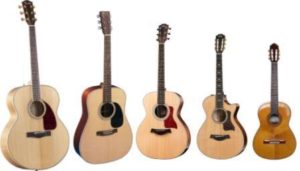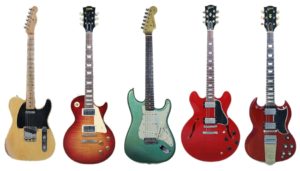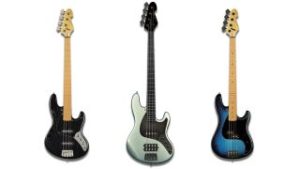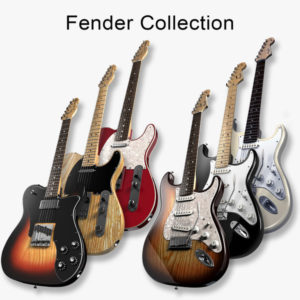Acoustic and Electric Guitars
Acoustic and electric guitars, while similar in structure, offer distinct sound experiences due to their design differences. Acoustic guitars produce sound through the vibration of strings in a hollow body, creating a rich and resonant tone that’s ideal for genres like folk and country. Electric guitars, on the other hand, rely on electronic amplification to produce a versatile range of sounds, suitable for rock, metal, and other styles. Both types of guitars require dedication to master, but they cater to different musical expressions and preferences.
The player when learning on a guitar, should not feel awkward or uncomfortable, so the size and shape of the guitar will play a big part in choosing the right guitar. Getting an idea of what style, the player likes is important. Looks and colour can be important too.
When buying a guitar for a beginner, it’s important to get a guitar that is properly sized, sounds great, and matches up with the player’s music tastes and aspirations. The price will still be a key factor in deciding which guitar to purchase.
There are three basic types of electric guitar body styles:
- The solid-body electric guitar is the most common body type and is made from a solid slab of wood.
- The hollow body, these electric guitars have hollow bodies—much like an acoustic guitar—and produce more resonance due to their design.
- The semi-hollow body has more resonance than a solid body. However, semi-hollow guitars are designed with a solid centre wood block that adds stability and sustains and helps cut down on feedback.
Acoustic Guitars are the typical and most basic guitars with hollow bodies. Modern variations include the classical guitar, steel-string guitar, and arch-top guitar. Whether you are looking for a traditional acoustic guitar, one with a pickup, a funky reissue, or a cool classical guitar, today’s manufacturers have developed some ingenious production techniques to bring you these wonderful instruments.
are the typical and most basic guitars with hollow bodies. Modern variations include the classical guitar, steel-string guitar, and arch-top guitar. Whether you are looking for a traditional acoustic guitar, one with a pickup, a funky reissue, or a cool classical guitar, today’s manufacturers have developed some ingenious production techniques to bring you these wonderful instruments.
Electric Guitars work on the same general principles. The pickup mounted on the electric guitar’s body functions as a magnetic field. When a metal string is plucked and vibrates, it generates a current. That current is transmitted by the pickup through a preamp circuit with tone controls to the guitar cable and in turn to the amplifier. The electric guitar is a major player in a rock band.
work on the same general principles. The pickup mounted on the electric guitar’s body functions as a magnetic field. When a metal string is plucked and vibrates, it generates a current. That current is transmitted by the pickup through a preamp circuit with tone controls to the guitar cable and in turn to the amplifier. The electric guitar is a major player in a rock band.
 Bass Guitars are used for playing the beats and music framework. It can also be used for solo playing in heavy metal. The bass guitar is usually played with the fingers or thumb by plucking (pulling upwards) on the string.
Bass Guitars are used for playing the beats and music framework. It can also be used for solo playing in heavy metal. The bass guitar is usually played with the fingers or thumb by plucking (pulling upwards) on the string.
 Gibson Guitars pack a lot of tone and comfort into one affordable guitar. Gibson acoustic and electric guitars represent the history as well as the future of the electric guitar. Gibson is a well-known brand and has been making iconic guitars for musicians for over 100 years.
Gibson Guitars pack a lot of tone and comfort into one affordable guitar. Gibson acoustic and electric guitars represent the history as well as the future of the electric guitar. Gibson is a well-known brand and has been making iconic guitars for musicians for over 100 years.
 Fender Guitars are well known in the Rock–N–Roll world and are legendary for electric guitars electric basses and amplifiers and continue to be highly prized by today’s musicians and collectors. Fender strives to enhance the musical experiences of all who use or aspire to own Fender products.
Fender Guitars are well known in the Rock–N–Roll world and are legendary for electric guitars electric basses and amplifiers and continue to be highly prized by today’s musicians and collectors. Fender strives to enhance the musical experiences of all who use or aspire to own Fender products.
 Guitar Amplifiers come in four types, solid-state (analog), tube, modelling (digital), and hybrids. In addition to types of amplifiers, amps come in different configurations and the construction of the cabinet is a major factor in determining the quality of sound.
Guitar Amplifiers come in four types, solid-state (analog), tube, modelling (digital), and hybrids. In addition to types of amplifiers, amps come in different configurations and the construction of the cabinet is a major factor in determining the quality of sound.
 Guitar Strings have a major impact on the sound and playability of the guitar. There is a lot to consider in figuring out which strings are right for you and your guitar. Good guitar strings will give you a nice tone, but bad guitar strings will make your songs sound not very good no matter how good you are at playing your guitar.
Guitar Strings have a major impact on the sound and playability of the guitar. There is a lot to consider in figuring out which strings are right for you and your guitar. Good guitar strings will give you a nice tone, but bad guitar strings will make your songs sound not very good no matter how good you are at playing your guitar.
